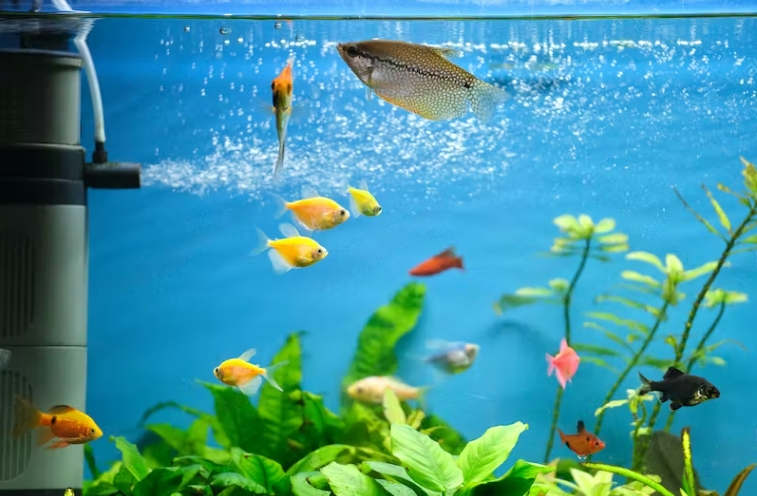
Aquariums are a great way to bring a more aesthetic appeal to your house and improve its overall tranquillity. Since they can be both soothing to look at and provide hours of enjoyment, it is worth maintaining.
You can further improve the overall quality of your aquarium by using Aquarium sand. Aquarium sand is a popular sand substrate choice among fish keepers because of its aesthetic appeal and easy maintenance.
One of the critical components of a successful aquarium is choosing the right plants. However, not all plants suffice well. In this article, we will discuss the best aquarium plants for sand.
Why Do You Need To Have Aquarium Plants?
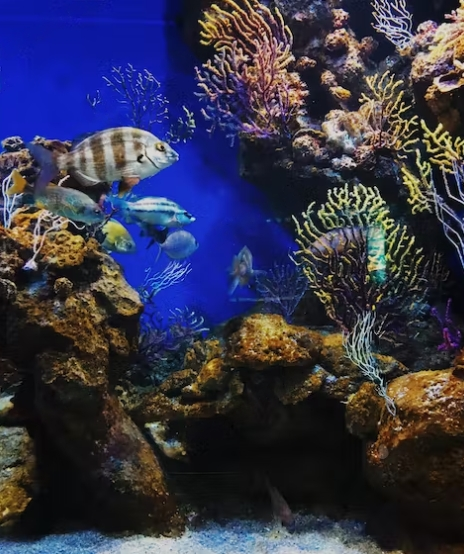
Aquarium plants are a great addition to any home, and they come with several benefits. One of the most significant benefits is that they are easy to clean, but unlike other types of aquarium substrate, sand is light enough to be easily sucked up by a vacuum cleaner. This makes it much easier to keep your tank clean and algae-free.
Another benefit of sand is that it is very dense. This means that it can help to support heavier plants, which can be crucial in preventing them from floating up to the surface of the water. Sand also has a neutral pH, which is ideal for most aquarium plants.
Aquatic plants help to keep the water clean by absorbing nutrients and producing oxygen. They also provide a place for fish to hide and lay their eggs.
The aquatic plant roots help keep the sand in place and prevent it from getting stirred up. This is especially important in reef tanks, where the sand is home to many small creatures.
How Does Sand Affect The Growth Of The Plant?
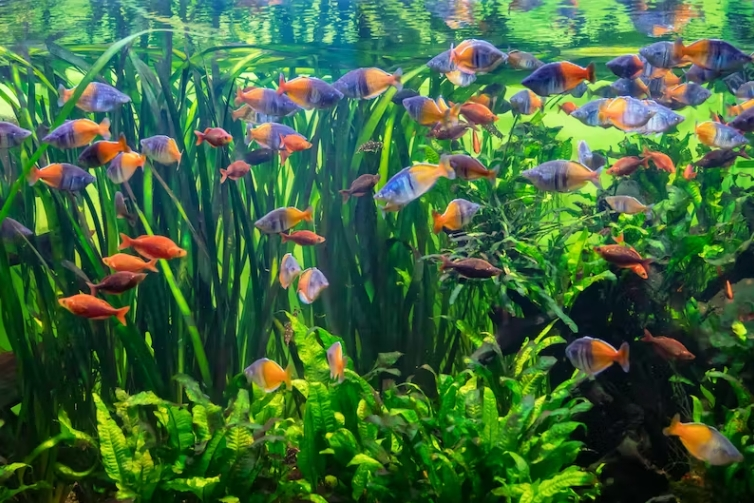
It’s no secret that plants need nutrients to grow, but what many people don’t know is that they can get these nutrients from the sand. While it’s true that most plants won’t grow in the sand because it doesn’t hold water well, some plants prefer it.
Aquarium plants are a good example of plants that thrive in sand. These plants can get water and nutrients from the sand without problems, and many aquarists believe that a sand substrate is the best for aquarium plants. It’s essential to choose the right type of sand for your aquarium.
Here are a few things to keep in mind when selecting sand for your aquarium
- The grain size of the sand is essential for aquarium plants because they need room to spread their roots. Coarser sand will provide better drainage and aeration for the roots, while finer sand will hold more moisture and nutrients.
- The pH of the sand is also essential for aquarium plants. Most plants prefer a neutral or slightly acidic pH, so you’ll want to choose sand with a pH that falls within that range.
- Finally, you’ll need to make sure that the sand you choose is free of any toxins or chemicals that could harm your plants.
The Top 15 Best Aquarium Plants For Sand
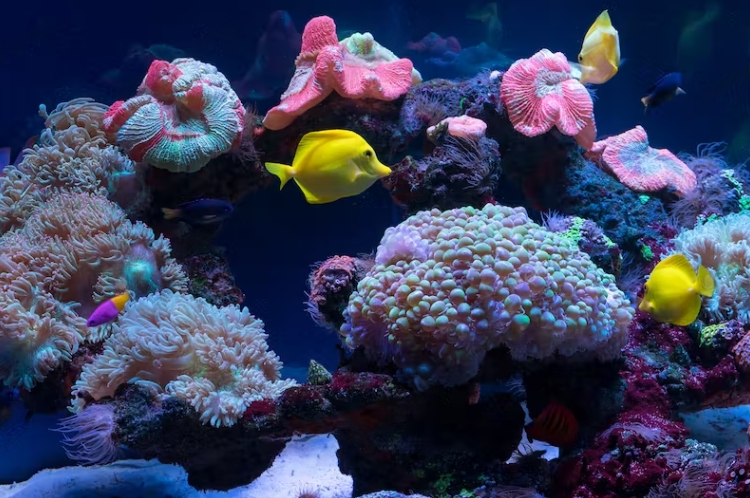
1. The Amazon Sword
The Amazon Sword is a popular aquatic plant from the Amazon River Basin. It gets its name from its long sword-like leaves, which can grow up to 2 feet in length. The plant requires many nutrients to thrive, so providing a nutrient-rich substrate and fertiliser is essential.
Amazon Swords are also relatively large plants; they can reach up to 12 inches and spread up to 24 inches wide. Given their size, they’re best suited for medium to large aquariums.
The plant has strong roots, which help to anchor it in the substrate and keep it from floating away. The roots also help absorb nutrients from the plant’s water and a lot of light to grow well. The plant can tolerate low levels of light, but it will not grow as large or as quickly as it would in higher levels of light.
2. The Cryptocoryne
Aquatic plants are a beautiful and beneficial addition to any freshwater aquarium. Cryptocoryne plants are a popular choice for many aquarium hobbyists because of their wide range of colours and easy-care requirements.
Cryptocoryne plants are native to tropical regions of Asia, where they grow in slow-moving streams and rivers. The plant gets its name from the Greek word “Kryptos,” which means hidden, referring to the plant’s flowers inside the leaves.
Cryptocoryne plants are available in various colours, including green, red, brown, and purple. The leaves of the plant can vary in shape and size, depending on the species. Cryptocoryne plants are relatively easy to care for and thrive in many water conditions.
3. The Java Fern
If you are looking for an aquatic plant that is easy to care for and adds a touch of beauty to your tank, Java Fern is a great option.
Java Fern is a low-maintenance plant that does not require any special care. It can live in a wide range of water conditions and even tolerate some salty water since Java Fern is also relatively disease-resistant.
This plant gets its name from its country of origin, Indonesia. It’s also called Microsorum Pteropus or window leaf fern. Java Fern has been introduced to many other countries. It grows best when attached to driftwood or rocks.
4. The Vallisneria
If you are considering adding a Vallisneria aquatic plant to your tank, there are a few things you should know. This plant is also known as eelgrass, tape grass or Vallis. It is a popular choice for many aquariums because it provides hiding places and oxygen for fish and can also help keep the water quality high.
Vallisneria aquatic plant is a freshwater plant that is commonly used in aquariums. It is a hardy plant that can grow in various conditions, making it a good choice for beginners.
Vallisneria aquatic plant is relatively easy to care for and does not require much maintenance. These plants can grow large, so ensure your tank is big enough to accommodate them.
One of the most significant advantages of Vallisneria aquatic plants is that they are very tough and can withstand a lot of harm faced inside the aquarium.
5. The Hornwort
Known for its horn-like needles and slender stems, Hornwort is a fast-growing plant species with horn-like needles. Plant tanks can be enhanced with this plant as a background.
Hornwort does not grow well in nano tanks because of its relatively fast growth rate. It should be grown in tanks at least 15 gallons (60 litres) in size – Water surfaces or sand substrates are good places to plant Ceratophyllum demersum.
Because Hornwort does not produce roots, planting it can be tricky. The plant anchors to the sediment by forming modified leaves since it uses lead weights, suction cups (for attaching to the tank walls), or any other accessory to help you weigh the plants down.
6. The Java Moss
If you are looking for a low-maintenance plant to add to your aquarium, Java moss is a great option. Java Moss is an aquatic plant found in many conditions and is often used as a decoration in aquariums and in various colours.
This aquatic plant is native to Southeast Asia and grows on rocks, trees, and logs near streams and rivers. Java moss is easy to care for and can thrive in various water conditions. Here are some benefits of adding Java moss to your aquarium:
Java moss is an excellent source of food and shelter for fish. This plant produces a lot of oxygen and provides hiding places for fry and small fish. Java moss is also known to help reduce stress in fish.
Java Moss is a versatile plant that can be used in various ways. It can be attached to driftwood or rocks and used as decoration in the aquarium. It can also be left floating freely in the tank. Java Moss is known to help with nitrate levels and provides shelter for fry and small fish.
The roots of the Java Moss help to keep the water column clean and provide homes for beneficial bacteria, and the plant also helps to oxygenate the water and reduce algae growth.
7. The Anubias
Anubias is a family of aquatic plants that are native to Africa. The Anubias genus is the only genus in the family and comprises about 20 species. Anubias plants are known for their large size, thick roots, and dark colours.
Anubias plants have been used in aquariums for centuries. They are one of the most popular aquatic plants because of their ease of care and hardiness. Anubias plants can grow very large, making them a focal point in aquariums.
Anubias plants come in various colours, including green, brown, and black. The most popular colour is green, which is the easiest to care for. Anubias plants can also be found in shades of red and pink, but these are less common.
These plants are known for their ability to live in low-tech tanks and their hardiness in general. Anubias plants are often used as accent plants in aquascaping setups because of their unique root structure. Some of the key features that make Anubias aquatic plants so popular are:
- Their ability to thrive in low-tech tanks.
- Their hardiness.
- Their unique root structure.
8. The Dwarf Hygro
A Dwarf hygro is a type of aquatic plant native to Central and South America and is a popular plant for aquariums and has various colours, shapes, and sizes. The plant comes from the Greek word “hygro,” which means “water.”
Aquarium enthusiasts often choose dwarf hygro plants for their tanks because they are not heavy root feeders and take most of the nutrients they need from the aquarium water.
These plants are perfect for smaller tanks because they don’t require much-growing space. The plant is relatively easy to care for and does not require much attention. However, it is essential to keep the roots trimmed so they do not become too long and tangled. Dwarf hygros can grow to be up to 18 inches tall.
If you’re looking for a low-maintenance plant for your aquarium, dwarf hygro is an excellent option. Just be sure to research the specific needs of this plant before adding it to your tank.
9. The Ludwigia repens
Ludwigia Repens, also known as creeping primrose-willow, is a species of flowering plant in the evening primrose family. It is native to North and South America, where it is found in damp habitats such as marshes, swamps, and riverbanks. In Europe and Asia, it is often used as an ornamental plant.
Ludwigia Repens is a perennial herbaceous plant that grows 30-60 cm tall. The leaves are opposite, lanceolate to oval-shaped, with serrated margins. The flowers are yellow, with four petals, each about 1 cm long. The fruit is a small capsule containing several seeds.
The roots of Ludwigia Repens are creeping and fibrous, making the plant very difficult to remove once it has become established in an area.
To take care of Ludwigia’s repens, follow these steps:
- Maintain the right level of light for it. An aquarium with low light will result in the plant losing its colour and its leaves.
- You do not need to fertilise, but root tabs make your plant look much healthier.
You can propagate ludwigia by either rooting stem cuttings or planting seeds once it has flowered.
10. The Cabomba
Cabomba is a perennial aquatic plant that is native to South America. It has been introduced to other parts of the world, including North America, Europe, Asia, and Africa. Cabomba typically grows in freshwater lakes, ponds, and streams. The plant has long, slender leaves arranged in pairs or whorls.
The leaves are typically green or greenish-brown in colour. The flowers of Cabomba are small and white. The fruit of Cabomba is a small capsule that contains several seeds.
Cabomba has a long history of use in traditional medicine. In South America, it was used to treat various ailments, including fever, diarrhoea, and rheumatism.
This plant can be kept much shorter through regular pruning. Cabomba aquatic plants prefer a sandy bottom and do not need any substrate. This plant can also do well in a wide range of lighting conditions, from low to high. One thing to keep in mind with the Cabomba aquatic plant is that it is a heavy feeder and will need regular fertilisation. Liquid fertiliser works well for this purpose.
11. The Madagascar Lace
The Madagascar Lace aquatic plant is a beautiful and unique addition to any aquarium. This plant is native to the island of Madagascar and gets its name from the lace-like leaves that grow on it. The roots of the Madagascar Lace are white and can grow up to two feet long.
The plant leaves are green with red or purple veins running through them. The Madagascar Lace is a fast-growing plant and can reach up to six inches in height. This plant is perfect for beginners because it is easy to care for and does not require much attention.
Our list’s most specific plants require more specific conditions, and they are easy to kill if you aren’t careful. You will need to fertilise your plant if you choose this route.
Water column fertiliser is essential for the health of this plant. Despite some recommendations for root tabs, this plant prefers soils with low nutrient levels.
Getting the water parameters right, however, will be rewarded by an aquarium centrepiece that looks amazing.
12. The Tiger Lotus
Tiger lotus aquatic plants are native to South America and have been introduced to many other parts of the world. They are easy to grow and maintain, making them a popular choice for home aquariums and ponds.
The plant has long, thin roots that help it anchor to the bottom of the pond or aquarium. Tiger lotus can grow in deep and shallow water but prefers warm water and will die if it gets too cold.
Tiger lotus is not picky about food and will eat most types of fish food. The plant also helps to keep the water clean by absorbing nutrients from the water.
There are many benefits of having a tiger lotus aquatic plant. They are known to improve water quality and clarity, provide oxygenation, and support the growth of beneficial bacteria. They can also help to reduce algae growth and control nuisance weeds.
Tiger lotus plants produce large, round leaves that float on the water’s surface. The flowers are white or pink and have a yellow centre. The plant grows best in full sun but can tolerate partial shade.
13. The Rotala Indica
Rotala Indica, also known as an aquatic plant, is a species of plant in the family Lythraceae. The plant is native to tropical and subtropical regions of Asia and Africa. It is an aquatic perennial herb that grows in water up to 1 metre deep. The leaves are opposite, sessile, and oblong-lanceolate, with a length of 2-10 cm and a width of 0.5-2 cm. The flowers are white or pink and occur in axillary or terminal spikes, but the fruit is a capsule with two locules containing black seeds.
Rotala Indica has been used medicinally for centuries in traditional Chinese medicine and Ayurveda to treat various diseases, such as malaria, jaundice, dysentery, and diarrhoea.
Adding CO2, fertilising it, and giving it high light makes it better, but it will still grow without fertilisation or CO2.
However, going the extra mile will increase the growth rate and oxygenation of your water.
You can grow it quite quickly if you give it the right conditions. It requires more care than other plants on this list if you want to keep it short and neatly trimmed.
New stems will begin to grow just below the cut you made when you cut off a piece of the stem (making it bushier). Rotala plants can be replanted from the portion you cut off.
14. The Myrio Filigree
Myrio Filigree is a beautiful aquatic plant native to the southern United States. The plant gets its name from the Greek word for water, myrion. Filigree refers to the intricate patterns on the leaves of the plant.
Myrio Filigree has been a popular aquarium plant for many years. The plant is easy to care for and can tolerate many water conditions. Myrio Filigree is also a hardy plant and can withstand periods of drought.
The roots of Myrio Filigree are fundamental to the health of the plant. The roots help to anchor the plant in the substrate and also help to filter the water.
15. The Crypt Wendtii
Cryptocoryne wendtii, commonly known as Crypt Wendtii, is an aquatic plant native to Sri Lanka. The plant gets its name from the Greek word “Kryptos”, meaning hidden, and “coryne”, meaning club-shaped.
Crypt Wendtii is a member of the Araceae family and can grow 12-18 inches tall. The leaves of the plant are lanceolate shaped and range in colour from dark green to brown. The leaves are attached to the stem via a sheath filled with water. The roots of the plant are white and have a spongy texture.
The plant prefers to grow in areas with plenty of sunlight and a substrate that is rich in nutrients.
Conclusion
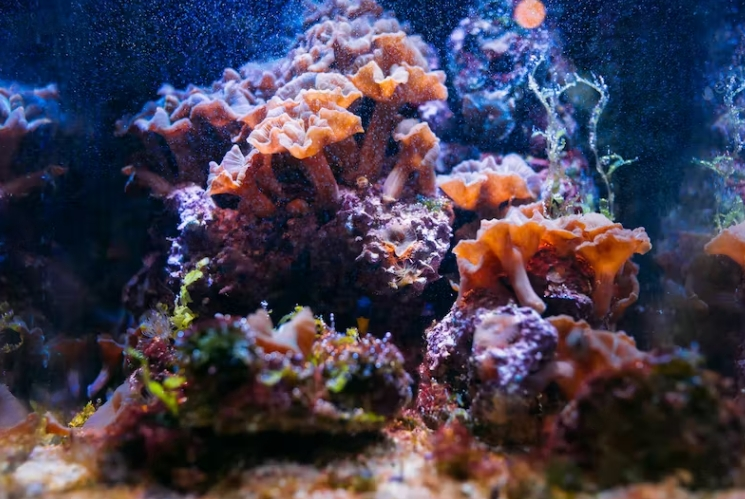
So what should you take away from this article –
- aquarium plants for sand can provide a beautiful and natural look to your tank while also providing some benefits for your fish.
- They help keep the water clean and provide a place for your fish to hide and rest.
Many types of aquarium plants for sand are available, so find one perfect for your tank. You can buy some aquarium plants!
FAQs
How do I choose the right aquatic plants for my sand garden?
With so many types of plants, you might wonder which ones are appropriate for a sand garden. Plants with fine roots or leaves are not appropriate if your garden is sand based, as they will probably cause compaction. Instead, go for perennial or drought-tolerant varieties with thicker roots or stems, like astilbe and dianthus.
How do you keep live plants in a sand aquarium?
There are many ways to keep live plants in a sand aquarium. One option is to use a large pot as the water reservoir and put it at the bottom of the tank. The pot should be filled with water and then covered with dirt or gravel. Another option is to use an air pump, air stones, and tubing to create bubbles that will rise through the sand and keep your plants watered.
Are bare-bottom tanks better?
Bare bottom tanks are a type of fish tank that does not have clay gravel or any other aquarium substrate on the bottom. They are typically used for breeding purposes and to keep fry. There are many benefits of bare-bottom tanks but also some disadvantages.


